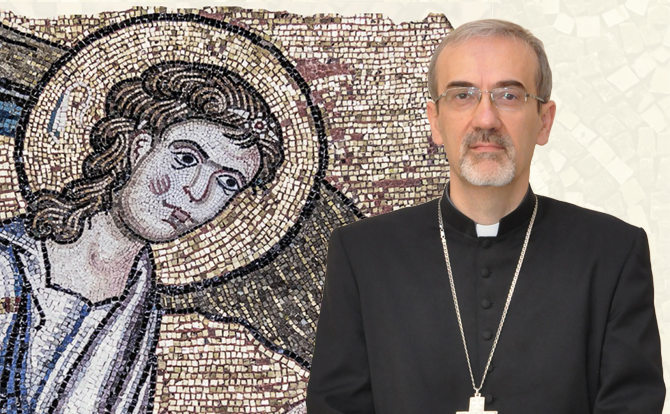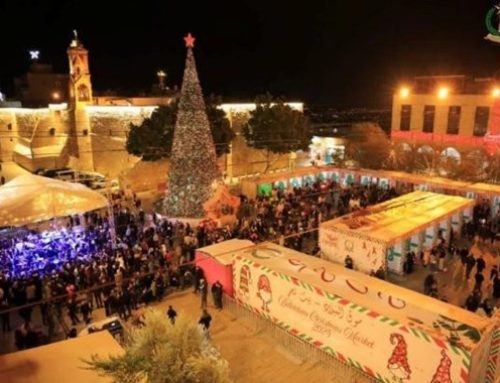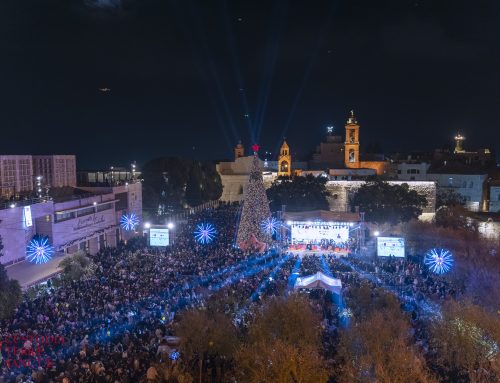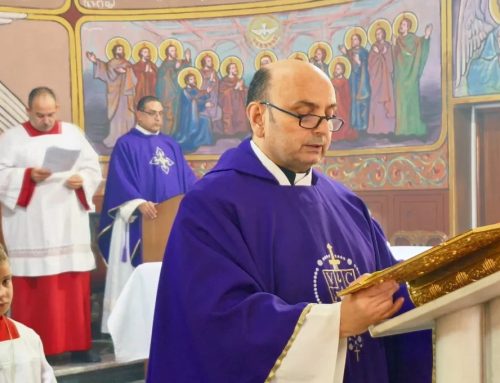HOLY LAND – Archbishop Pierbattista Pizzaballa, Apostolic Administrator of the Latin Patriarchate, explains the episcopal motto “Sufficit tibi gratia mea” (2 Cor 12:9) he has chosen for his Episcopal Ordination that will take place in Bergamo, Italy, on 10 September.
“The Church in the Holy Land has no means and no power. She only has Christ and His Grace”. Mgr. Pierbattista Pizzaballa explains in this way the episcopal motto “Sufficit tibi gratia mea” (2 Cor 12:9) he has chosen for his episcopal ordination that will take place in Bergamo, Italy, on 10 September, by the laying of the hands of the Prefect of the Congregation for the Oriental Churches, Cardinal Leonardo Sandri.
“The Holy Land – Mgr. Pizzaballa explains in the booklet of his ordination – is at the crossroads of divisions and difficulties of all kinds: between the Churches, between monotheistic faiths, and between the peoples living there. Such difficulties always seem huge and insurmountable. In this context, the Church appears to be overwhelmed by these situations. Others may be tempted to believe that they are called to bring ‘their own salvation’ based on their means and strategies into the tragedies of that Land. Yet, in these circumstances, the Word of God reminds us that it is to Grace alone, and nothing else, that we should entrust ourselves. The Church in the Holy Land has no means and no power. She only has Christ and His Grace”.
This Biblical reference has motivated the choice of my motto: “We should be aware that our mission is a witness to the Grace that has touched us first, and from this Grace we should always start again”. The coat of arms chosen by Mgr. Pizzaballa shows the city of Jerusalem as it was depicted “in the Middle Ages on the seals of the Latin Kingdom, that is, as a city with walls and a door, from which emerge the truncated cone-shaped dome of the Holy Sepulchre, the Tower of David and the round cupola of the current Mosque, a depiction that was associated with the motto ‘Civitas Regis Regum omnium’. The colours are similar to those used in the coat of arms of Jerusalem during the Latin Kingdom, featuring the golden cross of Jerusalem on a silver background”. These colours are to be considered “unique and exceptional” in heraldry as they contravene the so-called “rule on tincture” that “metal should never be put on metal, nor colour on colour”.
It is only because Jerusalem is unique that this was considered acceptable and therefore not a “mistake”. The choice of these colours is a “tribute to the city of Jerusalem that is hence honoured with those most precious colours that in heraldry are only attributed to it. In heraldry, gold is a symbol of faith and truth, and silver of purity, innocence, humility and justice. Even today, Jerusalem maintains its vocation to be a house of prayer for all peoples, and the three places depicted in the medieval coat of arms are also a reference to the different religious traditions that coexist there, and to the peace that the Bishop himself is called to build among them”.
Source : Servizio Informazione Religiosa






